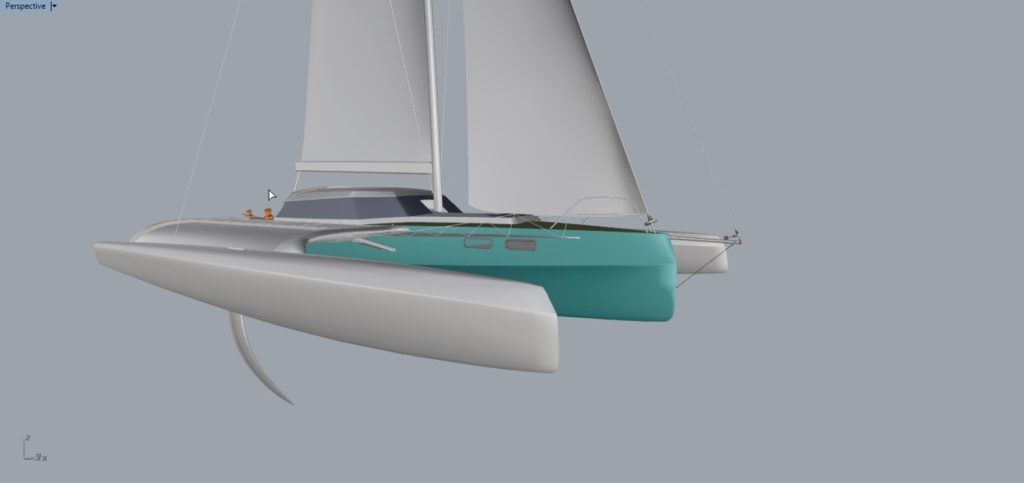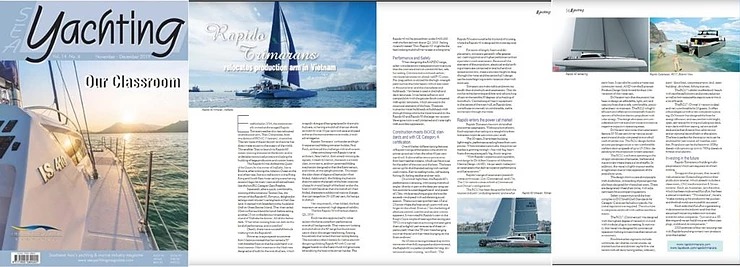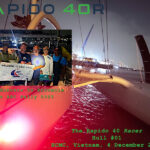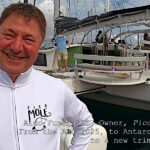SEA Yachting Magazine has published an article on Rapido Trimarans’ full range of trimarans in its November / December 2019 issue. Below is an abridged version of the original article.
For the original article, click here and turn to pages 54-56.
*****
The Queen of the Oceans, the Rapido 60
The Rapido 60 was dubbed the Queen of the Oceans by the owner of Ineffable, Steve Bourne, after crossing the Atlantic Ocean at the end of last year. Steve is well known in the Hong Kong and South East Asian sailing scene having raced a Magic for many years and helmed boats like the hot IRC Category Zero Freefire.
Separately, after a quick, comfortable, crossing of the notorious Tasman Sea, the owners of the Rapido 60, Romanza, delighted in telling a story of a day’s sailing back in New Zealand. It started with breakfast in the Auckland Gulf on Great Barrier Island. They then sailed 30nm to Kawau Island for lunch before sailing another 25 nm to the famous wine-making island of Waiheke for dinner! All of this before dark. What other cruising boat can deliver this kind of performance, and in comfort?
Clearly, there was a successful formula working with the Rapido 60.
Rapido 50
However, one prospective customer from Majorca insisted that he wanted a Rapido 50 with foldable floats so that he could berth it in local marinas. Many marinas in the Mediterranean were designed and built for the monohull era, which is rapidly dying and being replaced by the multihulls era, so having a multihull that can shrink its width by over 50 per cent with ease and speed either at the marina entrance or inside, is truly advantageous.
Rapido Trimarans’ co founder and highly experienced folding trimaran builder, Paul Koch, embraced the challenge with enthusiasm.
Morrelli & Melvin
After consulting with Rapido’s naval architect, Pete Melvin, from award-winning designers, Morelli & Melvin, the result is a world class, innovative, and now patented folding mechanism designed so that the floats remain, at all times, in the upright position. This keeps the sides clean of algae and barnacles when folded. Additionally, the folding mechanism does not add to the length of the boat (marinas charge by overall length of the boat) and as the boat’s width reduces to that of a monohull when folded, there are no additional marina charges, that can range from 50-100 per cent, for being a multihull. Very importantly, when folded, the boat maintains an extremely high degree of stability.
The first Rapido 50 will be launched in Q1, 2019.
Rapido 40
Koch was also approached by other sailors who have come from performance monohull backgrounds. They were now looking at multihulls in the 40’ range but found most cats in the in this range were boring, floating houseboats that lacked that real sailing feeling. The outcome is that Morrelli & Melvin are now designing a folding Rapido 40 with C curved dagger boards on the floats which will give more lift enabling the boat to be driven harder. The Rapido 40 will be priced from under $400,000 with the first delivery due in Q1, 2019.

Sailing Anarchy stated ‘This (Rapido 40) might be the best looking multihull we’ve seen in a long time‘.
Performance and Safety
When designing the RAPIDO range, safety considerations were paramount to ensure that the crew are always in control for fast, safe, fun sailing. Construction is infused carbon/ vinylester laminates on closed-cell PVC cores. Pre-preg carbon is utilized for the high-strength parts such as the cross beams (which are cured in the autoclave) and the chainplates and bulkheads. Vinylester is used in the hull and deck laminates. It has better adhesion and compatibility with the gelcoat finish compared with epoxy laminates, which are used in the structural elements of the boat. There are numerous water bulkheads or bulkheads with through fittings above the water line and on the Rapido 60 and Rapido 50 the large very accessible engine room is self contained and water tight with auto fire suppression.
Construction meets ISO/CE standards and with CE Category A certification.
One of the key differentiating features of Rapido’s range of trimarans is the ability to power up and sail when the other 99 per cent stand still. It also enables one to power away from bad weather systems, which can be critical for the safety of the crew and the boat. The boats are set up for short handed sailing with centralized systems, Karver reefing hooks, self tacking furling jib, furling reacher and stay sails.
On a windy tight beat, the Rapido 60’s performance is amazing, with racing monohull angles (thanks in part to the deep pre-preg carbon autoclave cured daggerboard – see video below from our sister company, Triac Composites) and speeds of 17kts, while at reaching angles the boat far exceeds windspeed with exhilarating acceleration. There is a sweet spot between 18 and 23 knots where the boat simply purrs with one finger on the wheel. Even at 27kts the feeling of absolute control, comfort and security is most apparent. It was noted by Rapido’s crew in the King’s Cup a couple of years ago that racing past TP52s on a tight beat in a cruising trimaran gave them all a slightly perverse sense of sheer joy – particularly when the TP crew were hanging out over the rail and they were lounging on the floats and nets!
‘At 10 tons in racing mode and up to two tons more when fully equipped and provisioned, the Rapido 60 is a perfect platform for long-distance and ocean cruising,’ says Koch. ‘The Rapido 50 is also suitable for this kind of cruising, while the Rapido 40 is designed for more regional use.’
For ratios of length, beam and displacement, trimarans generally offer greater sail-carrying power and higher performance than equivalent sized catamarans. Because all the elements of the propulsion, electrical and plumbing systems are contained in one hull and not spread across two, there is also less weight to drag through the water and the centre hull’s design can be more forgiving in trim variation than with most cats.
Trimarans are more stable and more sea kindly than monohulls and catamarans. They do not have the slamming and fore-and-aft pitching of cats or the terrible 30 degrees-plus heeling of monohulls. Centralising all heavy equipment in the centre of the main hull, as Rapido does, contributes immensely to comfortable, stable movement through the water.
Related links
- Download the original SEA Yachting file article in pdf format
- SEA Yachting Magazine, Rapido Trimarans relocates production to Vietnam, Nov / Dec 2019, pages 54-56
- Rapido 60
- Rapido 50
- Rapido 40
- Rapido Catamarans
- Triac Composites




